This complex is the leading complex of the national economy and serves as one of the main sources of gross domestic product and foreign exchange earnings. It creates 22.8% of the value of manufactured industrial products, employs 36.3% of the total number of industrial and production personnel in the country. The industry is managed by the Ministry of Industry of the Republic of Belarus.
Mechanical engineering is represented by the following sub-branches of industry: automotive, tractor and agricultural engineering, machine-tool and instrumental, instrument-making, radio engineering, electrical engineering, electronic, optical-mechanical, road-building engineering.
Automotive represented by 38 enterprises and organizations. It includes specialized research and development institutes that ensure the development of new products, technologies and equipment. The largest enterprises: Minsk Automobile Plant (RUE "MAZ"), Belarusian Automobile Plant (RUE "BelAZ"), Mogilev Automobile Plant (RUE "MoAZ"), Minsk Wheel Tractor Plant (Unitary Enterprise "MZKT"), etc.
The main task of the automotive industry will be the phased creation of capacities for the production of a family of automotive equipment that meets the standards of Euro-3, Euro-4, and later Euro-5.
Tractor and agricultural engineering focused on agricultural sector economy, it includes more than 80 enterprises producing tractors, combines, machinery and equipment for the production and processing of agricultural products, as well as spare parts for them. The largest enterprises: Minsk Motor and Tractor Plants, PA Gomselmash, Bobruiskagromash. RUE Minsk Gear Plant, Mozyr Machine-Building Plant OJSC, Brestselmash OJSC, Lidselmash OJSC, and others have a significant share in the industry.
As part of the development of the industry, the State Program "Mechanical Engineering" for 2006-2010 is in force, which includes the subprograms "Automotive, special equipment, automotive electronics and electromechanics", "Tractor building", "Diesel engineering", "Combine building and quarry equipment".
Machine tool building in Belarus represented by 32 enterprises, as well as special design bureaus, research and development organizations. Own machine-tool building in Belarus unites enterprises for the production of automatic lines, metal-working machines, universal technological equipment, forging and casting equipment, metal-working tools, hydraulic equipment and other general machine-building products.
The largest enterprises of the machine tool industry in Belarus are:
Minsk Plant of Automatic Lines named after P. M. Masherov (MZAL);
Minsk Machine-Tool Plant named after the October Revolution;
Minsk Machine-Tool Plant named after S. M. Kirov;
Vitebsk machine-tool plant "Vistan" named after S. M. Kirov;
Vitebsk Machine-Tool Plant named after the Comintern;
Gomel Machine-Tool Plant named after S. M. Kirov;
Gomel plant of machine-tool units and plant "Gidroprivod";
Gomel foundry "Tsentrolit";
Orsha machine-tool plant “Krasny Borets.
Main enterprises instrumentation Belarus are: Borisov RUE "Ekran" (produces equipment for navigation and aircraft piloting, anti-lock car systems, complex electrical appliances); Vitebsk plant of electrical measuring devices (electrical measuring devices, measuring converters, electronic electricity meters, microcompressors); Gomel Plant of Measuring Instruments (analytical instruments and electrode systems); Bobruisk plant of weighing instruments.
Radio engineering industry specialized in the development and production of television and radio equipment, communication facilities, technically complex goods popular consumption, products for various sectors of the economy. It includes over 70 enterprises, research and production associations, research and design and technological institutes. The largest representatives of the sub-industry are OJSC "Gorizont", RUPE "Vityaz".
Electronics industry Belarus includes: State Research and Production Concern "Planar", NPO Integral, Vitebsk PO "Monolit", Pruzhany Plant of Radio Components, Minsk Research Institute of Radio Materials. The main products are integrated microcircuits, semiconductor devices, liquid crystal displays and panels; a wide range of monolithic ceramic capacitors; optical-mechanical, assembly and control-measuring equipment for the radio-electronic industry; medical technology and equipment, including an artificial heart valve.
Electrical industry includes 41 enterprises that manufacture cabling and wiring products, asynchronous electric motors, power and low power transformers, low-voltage equipment, lighting products, elevators and elevator equipment, electronic control gear, ignitors for gas-discharge lamps, proximity switches, power semiconductor devices and rectifier units on their basis, electric motor control systems.
Large enterprises of the industry: Minsk Electrotechnical Plant named after V. I. Kozlov, Mogilev Plant "Electrodvigatel", Brest Electric Lamp Plant; Molodechno JSC "Electromodul"; Mozyr JSC "Belaruskabel"; Gomel JSC "Gomelkabel"; Shchuchin plant "Avtoprovod".
Optical-mechanical industry specializes in the production of: space and aviation topographic equipment; cinema equipment; photographic complexes; devices and rangefinders, including those using lasers; night vision devices; optoelectronic devices for armored vehicles, small arms and hunting weapons; medical equipment with laser systems. The enterprises of the industry also produce machines for processing optical parts, vacuum installations for applying the name of coatings on optical parts, machines for cutting glass, quartz, and ceramics.
Optical instrumentation presented in Belarus - Minsk Mechanical Plant named after S. I. Vavilov. On its basis, the Belarusian Optical and Mechanical Association "BelOMO" was created, which included newly built enterprises with closed production cycles: the Lpda plant "Optic", the plants "Zenit" (Vileika), "Light", "Diaprojector" (Rogachev). Smorgon optical machine tool plant, a complex of research laboratories, etc.
Construction, road and municipal engineering includes more than 10 enterprises: OJSC "Amkodor - Udarnik", the plant "Mogilevtransmansh", the lift-building plant "Mogilevliftmash", the Mozyr machine-building plant, the Volkovysk plant of roofing and road-building machines, the Belarusian excavator plant ( Vitebsk region), PA "Belkommunmash".
Introduction
Mechanical engineering is part of an industry called Mechanical Engineering and Metalworking. Mechanical engineering creates machines and equipment, apparatus and devices, various kinds of mechanisms for material production, science, culture, and the service sector. Metalworking is engaged in the production of metal products, the repair of machinery and equipment. At present, the machine-building industry in Russia consists of a number of independent industries, which include over 350 sub-sectors and industries. Mechanical engineering produces means of labor - machinery and equipment, instruments and computers, transmission devices, vehicles - for all industries National economy... It produces consumer goods, mainly durables (cars, televisions, watches, etc.). By the mid-1980s, means of production in the total volume of machine-building products accounted for 88.9%, consumer goods - only 11.1%, which testified to the lack of orientation of domestic machine-building to the needs of the mass consumer. In this test work not only the sectoral structure of the machine-building complex and the factors of the location of its branches and sub-branches will be reflected. But also characterized state of the art complex, prospects and options for a way out of the current difficult economic situation. Taking into account the specifics of this topic, the structure of the study makes it possible to consistently illuminate in the first chapter the theoretical issues (role and significance, the specifics of location, sectoral structure) of the machine-building complex, in the second - the currently unfavorable economic situation in the complex, in particular in the aviation industry, in the third The chapter will highlight the prospects for the development of the machine-building and metalworking industry (using the example of the aviation complex).
1 The importance of the industry in the system of the national economy
The machine-building complex is a set of industries that produce a variety of machines. He is the leader among intersectoral complexes. There are several reasons for this. Firstly, the machine-building complex is the largest of the industrial complexes; it accounts for almost 20% of the manufactured products and of all those working in the Russian economy. Mechanical engineering and metalworking are characterized by larger enterprises than industry as a whole (the average size of an enterprise in the industry is about 1,700 workers in terms of the number of workers, compared with less than 850 in industry as a whole), higher capital intensity, capital intensity and labor intensity of production; the structural and technological complexity of mechanical engineering products requires a varied profession and skilled labor force. Among all industries, machine building ranks first in terms of its share in gross output (in 1990 - 30%) and industrial and production personnel, second (after the fuel and energy complex) in terms of its share in industrial and production assets, as well as in the structure of exports (eighteen%). Secondly, mechanical engineering creates machines and equipment that are used everywhere: in industry, agriculture, in everyday life, in transport. Consequently, scientific and technological progress in all sectors of the national economy materializes through the products of mechanical engineering, especially in such priority sectors as machine tool building, electrical and electronic industry, instrument making, and the production of electronic computers. Machine building, therefore, is a catalyst for scientific and technological progress, on the basis of which the technical re-equipment of all sectors of the national economy is carried out. Therefore, the main economic purpose of engineering products is to facilitate labor and increase its productivity by saturating all sectors of the national economy with fixed assets of a high technical level. 1 The sectoral structure and features of the location of the machine-building complex of the Russian Federation are as follows: a) Factors of location of mechanical engineering Mechanical engineering differs from other industries in a number of features that affect its geography. The most important is the presence of a public need for products, qualified labor resources, own production or the possibility of supplying construction materials and electricity. Science intensity It is difficult to imagine modern mechanical engineering without the widespread introduction of scientific developments. That is why the production of the most sophisticated modern technology (computers, all kinds of robots) is concentrated in areas and centers with a highly developed scientific base: large research institutes, design bureaus (Moscow, St. Petersburg, Novosibirsk, etc.). An orientation towards scientific potential is a fundamental factor in the location of machine-building enterprises. Metal consumption The branches of mechanical engineering, engaged in the production of such products as, for example, metallurgical, energy, mining equipment, consume a lot of ferrous and non-ferrous metals. In this regard, machine-building plants engaged in the production of such products usually try to be as close as possible to metallurgical bases in order to reduce the cost of delivering raw materials. Most of the large heavy engineering plants are located in the Urals. Labor intensity From the point of view of labor intensity, the machine-building complex is characterized by high costs and very high labor qualifications. Manufacturing machines requires a lot of labor time. In this regard, a fairly large number of mechanical engineering industries gravitate towards the regions of the country where the concentration of the population is high, and especially where there are highly qualified and engineering and technical personnel. The following branches of the complex can be called extremely labor-consuming: the aviation industry (Samara, Kazan), machine-tool building (Moscow, St. Petersburg), the production of electrical engineering and precision instruments (Ulyanovsk). The military-strategic aspect can be considered as a separate factor in the geographical location of machine building. Taking into account the interests of state security, many enterprises of the machine-building complex that produce defense products are removed from the borders of the state. Many of them are concentrated in closed cities (for example, FSUE Kumertau Aviation Enterprise). Table 1.Grouping of engineering industries by location factors b) Features sectoral structure and the geography of the complex During the years of Soviet power in various regions the former USSR the largest machine-building enterprises were created, producing practically all the necessary technological equipment for all sectors of the national economy. But the domestic mechanical engineering is characterized by an extremely high degree of territorial concentration, moreover, mainly in the European part of the country, and an insufficient level of specialization and intersectoral cooperation. In addition, many large machine-building plants and production associations were designed and formed as universal, according to the principle of “natural economy”, c full set procurement, auxiliary and repair industries. Therefore, in the coming years, the sectoral, territorial and technological structure of mechanical engineering should undergo cardinal changes, the main directions of which should be improving the quality of products, deconcentration, increasing the level of specialization and cooperation of production, reducing irrational transport and other costs. Heavy engineering. Plants in this industry are distinguished by high consumption of metal and provide machines and equipment for enterprises of metallurgical, fuel and energy, mining and mining and chemical complexes. It is characterized by both enterprises producing parts and assemblies (for example, rolls for rolling mills) or enterprises specialized in the production of certain types of equipment (steam boilers or turbines for power plants, mining equipment, excavators), as well as universal enterprises that produce serial or individual performance different types equipment (Uralmash, St. Petersburg Metal Plant, etc.). The industry includes the following 10 sub-sectors: metallurgical machine building, mining, lifting and transport machine building, diesel locomotive building and track machine building, car building, diesel building, boiler building, turbine building, nuclear machine building, printing machine building. About 90% of the industry's production is concentrated in the European part, the rest in Western Siberia and on Far East... Production metallurgical equipment, which ranks first in the industry in terms of production value, is usually located in the regions large-scale production steel and rolled products. Ural enterprises produce equipment for sinter factories, blast furnaces and electric smelting furnaces, as well as equipment for rolling and crushing and grinding production. Factories profile mining engineering- machines for exploration, as well as open and closed methods of mining, crushing and enrichment of solid minerals at enterprises of ferrous and non-ferrous metallurgy, chemical, coal, industry and construction materials industry, transport construction. They are, as a rule, located in areas of consumption - in the Urals and Siberia, etc. Domestic mechanical engineering has a priority in the development and widespread industrial development of mining and shearer combines, rotary and walking excavators. These products are manufactured in Krasnoyarsk, Yekaterinburg (Uralmash), Shakhty, Kiselevsk and Perm. Hoisting-and-transport engineering products is of great economic importance, since about 5 mln. a person, moreover, more than half - by manual labor. Electric bridge cranes are produced in Central area(Uzlovsky plant), in the Far East (Bureysk, Komsomolsk-on-Amur) and in many other cities. Stationary and belt conveyors - in the Volgo-Vyatka, Central, Ural regions. Diesel locomotive building, car building and track machine building provides railway transport mainline freight, passenger and shunting diesel locomotives, freight and passenger cars, etc. Mainline diesel locomotives are produced at one of the oldest machine-building plants - Kolomenskoye, industrial shunting diesel locomotives - mainly in the Central Region (Bryansk, Kaluga, Lyudiyovo, Murom) and Ural. Freight car building is concentrated in Western Siberia (Novoaltaisk), in Eastern Siberia (Abakan). Passenger cars are produced by the Tverskoy, Demikhovsky and St. Petersburg plants. Track machines and mechanisms (laying, rail welding, snow removal and other machines are still produced in insufficient quantities and assortment, their production is concentrated in the cities of the European part of Russia - in Kaluga, Tula, Vyatka, Saratov, Engels, Armavir, Tikhoretsk. Turbo building supplying steam, gas and hydraulic turbines for the power industry is represented primarily by the production associations St. Petersburg Metal Plant, St. Petersburg Turbine Blade Plant, Yekaterinburg Turbomotor Plant, Dalenergomash (Khabarovsk). The factories of the sub-industry produce equipment for thermal, nuclear, hydraulic and gas turbine power plants, gas-pumping equipment for main gas pipelines, compressor, injection and disposal equipment for the chemical and oil refining industries, ferrous and non-ferrous metallurgy. The main factors of placement are the availability of qualified personnel and research and development organizations. Nuclear engineering form the factories of the head production associations "Izhora Plant" (St. Petersburg) and "Atommash" (Volgodonsk). The factories specialize in the production of tank reactors and other equipment for nuclear power plants. Printing engineering has the smallest volume of marketable products in the industry. Production is concentrated exclusively in the European part of the country - in St. Petersburg, Moscow, Rybinsk. Electrical industry... The industry produces more than 100 thousand items of products, the consumer of which is almost the entire national economy. In terms of production volume, it significantly exceeds in aggregate all subsectors of heavy engineering. The production of electrical products requires a wide range of technical means and materials produced by various industrial complexes... The location of enterprises in the electrical industry is due to various factors, where an important role is played by the availability of qualified personnel, specialized research organizations and large consumers. Currently, the main regions of electrical engineering are the Central, Northwestern and West Siberian regions. The oldest are such enterprises as the Moscow Electrozavod named after V.V. Kuibyshev, St. Petersburg "Electrosila", Yekaterinburg "Uralelektroapparat" and the Novosibirsk transformer plant. Machine tool industry includes the production of metal-cutting machines, forging and pressing equipment, woodworking equipment, metalworking tools, centralized repair of metalworking equipment. The factories of the machine-tool industry are located in the main machine-building regions. The average size of enterprises is relatively small. The major centers of the machine tool industry are Moscow (the plant of lathes and robotic complexes "Red Proletarian"), St. Petersburg, Ivanovo, Saratov, Ryazan, Nizhny Novgorod, Novosibirsk, Orenburg, Irkutsk, etc. Instrumentation. The products of this industry are notable for their low material and energy consumption, but their production requires a highly qualified workforce and research personnel. Therefore, the bulk of the production potential is concentrated in large and largest cities... For example, in Moscow and the Moscow region there are dozens of research and production and production associations specializing in the production, installation and commissioning of automation equipment, development software, design and manufacture of watches, medical devices, measuring equipment, office equipment. In the structure of mechanical engineering, the share of instrument-making products is about 12%. These high-tech products are the main element of automation systems for control of technological processes, as well as managerial and engineering labor, information systems, etc. In instrument making, more than 80% of products are manufactured by large enterprises (the number of employees is from 1 to 10 thousand people). Among the largest enterprises are the Second Moscow Watch Factory JSC, the Penza Watch Factory. Mechanical engineering for light and Food Industry ... This includes the following sub-sectors: production of equipment for the textile, knitted, garment, footwear, leather, fur industry, as well as for the production of chemical fibers and equipment for the food industry. The main factor of location is proximity to the consumer, therefore the overwhelming majority of factories and more than 90% of the volume of commercial output are located in the European zone (mainly Central, Volgo-Vyatka, North-West and Volga regions). Aviation industry ... In the aviation industry, enterprises of almost all branches of industrial production cooperate, supplying a variety of materials and equipment. Enterprises differ high level qualifications of engineering and technical and working personnel, which led to the emergence and development of the aviation industry in large industrial centers... Modern passenger and cargo aircraft are manufactured in Moscow, Smolensk, Voronezh, Taganrog, Kazan, Ulyanovsk, Samara, Saratov, Omsk, Novosibirsk. Helicopters are produced in Moscow, Rostov-on-Don, Kazan, Ulan-Ude, Kumertau. Rocket and space industry (Moscow, Omsk, Krasnoyarsk, etc.) produces orbital spaceships, rockets for launching satellites, cargo and manned ships and reusable ships of the Buran type, combining high technologies with a wide inter-industry complexity of production. Russia accounts for 85% of the capacity of the rocket and space complex of the former USSR. Automotive industry ... By the volume of production, as well as by the value of fixed assets, it is the largest branch of mechanical engineering. Automotive products are widely used in all sectors of the national economy and are one of the most popular products in the retail trade. More than 80% of transported goods account for automobile transport... The overwhelming part of production is concentrated in the old industrial regions of the European part of Russia with a high concentration of traffic and the presence of large transport hubs. The industry has a high level of production concentration. More than 1/2 of marketable products, fixed assets and personnel are accounted for by enterprises employing more than 10 thousand people, accounting for only 11% of the total. This group includes AMO ZIL and JSC Moskvich (Moscow), JSC GAZ (Nizhny Novgorod), JSC VAZ (Togliatti), JSC KamAZ (Naberezhnye Chelny). The main areas of location are Central (more than 1/5 of gross production), Povolzhsky, Volgo-Vyatsky and Uralsky districts. Agricultural and tractor engineering ... The main capacities of agricultural and tractor engineering are located mainly in the North Caucasian, Volga, West Siberian, Ural, Central, Central Black Earth and Volgo-Vyatka regions... This corresponds to the location and specialization of agriculture. In agricultural engineering, subject and detailed specialization is carried out; significantly fewer factories are specialized in certain stages of the technological process or overhaul of equipment. The production of grain harvesters is concentrated at the Rostselmash plant, at the Krasnoyarsk and Taganrog plants, potato harvesters in Ryazan, and flax harvesters in Bezhetsk. Various types of tractors are produced in Vladimir, Lipetsk, St. Petersburg, Volgograd, Rubtsovsk, Petrozavodsk, Barnaul, Bryansk and Cheboksary. Shipbuilding industry ... Most of the enterprises of the industry, despite the significant amount of metal of large parameters they consume, which is inconvenient for transportation, are located outside large metallurgical bases. The complexity of modern ships determines the installation of a variety of equipment on them, which implies the presence of cooperative ties with allied enterprises. Shipbuilding starts on land and ends afloat, so many shipyards are located at estuaries large rivers or in harbors sheltered from the sea. The largest maritime shipbuilding region has developed on the Baltic Sea, where its most important center is located - St. Petersburg with a number of factories (Severnaya Verf, Baltic, Admiralteisky, Kanonersky, Nevsky). There are shipbuilding and ship repair plants in Vyborg and Kaliningrad. Vladivostok and Petropavlovsk-Kamchatsky are the centers of ship repair in the Far East. River shipbuilding is represented by numerous shipyards on the most important river routes: Volga (Nizhny Novgorod), Ob, Yenisei. Profitable geographical position such factories makes the construction of ships in such enterprises very efficient. If we consider the regional aspect of the location of engineering industries, then the Central Economic Region will occupy the leading position among the engineering regions not only in Russia, but also in the CIS. Until recently, it accounted for more than 1/2 of the production of passenger cars, a significant part of automotive products, 90% of mechanical engineering products for light industry... Almost 80% of the products were exported to other regions and abroad. The development of high-tech production here is largely due to the presence here of highly qualified personnel, research and development and design organizations. Moscow plays an important role in the structure of production. Here are located the former flagships of the domestic automotive industry, JSC "Moskvich" and AMO "ZIL" and a huge number of "mailboxes" and conversion factories created on their basis. Moscow is also home to such large machine-building giants as JSC "Dynamo", Zavod im. Ilyich, several ball bearing factories. The branches of the machine-building specialization of the Central Economic Region are the automobile industry, locomotive-, carriage-building, river shipbuilding, tractor, agricultural, precision engineering. The Northwest Economic Region is part of the Central Region of Russia. The main share of mechanical engineering products falls on St. Petersburg, which concentrates energy, radio engineering, optical and mechanical engineering, marine shipbuilding, car building, machine tool building. Kaliningrad is an important center of marine shipbuilding. The second large region of concentration of machine-building industries is the Ural-Volga region. In terms of production volume, the region is second only to the Center. Ural enterprises produce 24.6% of all machine tools, 24.4% of press-forging and 17% of mining equipment. Large centers are the cities of Yekaterinburg, Chelyabinsk, Togliatti, Naberezhnye Chelny and Nizhny Novgorod. It should also be emphasized that in the Volgo-Vyatka economic region(Republic of Udmurtia), the most important enterprises of the defense industry are concentrated. In particular, the Izhevsk Arms Plant is located in the capital of the republic, which produces the entire range of light and medium-sized weapons. In the direction from west to east, there is a noticeable increase in capital construction costs, labor force, transportation of raw materials and finished products. If we take as 100% the costs of creating machine-building production in the central region, then costs in Siberia will increase by 7-12%, and in the Far East - by 12-15%. The corresponding increase in the cost of production will be 13-25%, depending on the specifics of production. Therefore, it is advisable to locate material and energy-intensive production of energy, lifting and transport, carriage-building and mining equipment near sources of raw materials and energy. Such enterprises are concentrated in Altai, in the Kemerovo and Irkutsk regions. The presence of highly qualified personnel in Novosibirsk and Omsk made it possible to create science-intensive enterprises of electrical and radio engineering engineering.
The role of an industry such as mechanical engineering, in the economy of any modern developed state is extremely large. It is safe to say that the state of many other industries largely depends on how well it is developed.
Experts evaluate mechanical engineering prospects based, first of all, on how widely and actively modern innovative technologies are being introduced in it. This industry stimulates the development of such an important segment as machine tool construction, where high-performance and high-precision metalworking equipment is manufactured. Its use, in turn, leads to a significant increase in the level of competitiveness of the economy as a whole.
It should be noted that for successful development engineering the industry requires a number of prerequisites. These include a well-developed and extensive theoretical base, rich practical experience, the presence of promising developments in the field of innovative technologies.
Machine-tool building has always been an area that has enjoyed particular attention in economically developed countries, both among engineers and designers, and among managers. In fact, this is not surprising at all, because how well developed this industry is, in many respects envy and whether it will be successful machine-building complex states, both in the domestic and international markets. It depends on the machine-tool industry whether other spheres of the economy will be provided with a sufficient amount of truly modern technological equipment.
Metal cuttingIn mechanical engineering those technological processes that are associated with the processing of metals by cutting occupy a leading place. In the process of manufacturing machines and mechanisms, they are the most expensive and technically complex.
The complex of problems and issues related to cutting metals includes not only various information directly about this process, but also about the cutting tool, methods of its use and materials for production, as well as design features. In addition, successful metal cutting requires proper use of the equipment.
At present, the science of metal cutting is developing successfully and dynamically. The result of this process is the improvement production technology, development and implementation of new types of cutting tools with improved technical and operational characteristics. It should be noted that the modern mechanical engineering- This is the industry in which a variety of means of mechanization and automation of production are most widely and actively introduced, and this process is complex in nature.
On modern engineering In production facilities, numerically controlled machines are widely used, which process workpieces according to pre-programmed programs, practically without human intervention. The operator only fixes the workpieces, removes the machined parts and controls the operation of the equipment.
Metal cutting methodsAll technological processes metal processing, involving the formation of shavings, are divided into five main types:
Turning... Its main distinctive features are the fast rotation of the workpiece and the relatively slow movement of the cutting tool;
Planing... It assumes intermittent feed of the cutting tool and rectilinear reciprocating motion of the workpiece;
Drilling... With it, either the part or the cutting tool remains stationary;
Milling... It is characterized by slow movement of the part and fast rotation of the cutting tool;
Grinding... It is provided due to a very fast rotation of the grinding wheel and a relatively slow movement of the workpiece to be processed.
The machine-building complex is a collection of certain products of which are various machines and mechanisms. Moreover, this education is characterized by very complex connections.
The machine-building complex, the structure of which is extensive, includes machine building itself, as well as metalworking. The products of the enterprises of this complex play a major role in the implementation of the latest achievements of modern scientific and technological progress. Moreover, this is relevant for all areas of the national economy.
The structure of the engineering industry
This largest complex industry provides the entire national economy of the country with instruments and equipment. For the population, it produces a variety of consumer goods. The machine-building complex includes the repair of equipment and machines, as well as metalworking. It is characterized by the deepening of production specialization and the constant expansion of the scale of activity.
The machine-building complex includes more than seventy branches. Moreover, all of them are combined into groups according to the purpose of the products, the similarities and types of raw materials used.
The machine-building complex includes:
1. Power and heavy engineering. This includes production of energy, lifting and transport and mining, printing and nuclear equipment, carriage, turbine and diesel locomotive building.
2. Machine tool responsible for the production of various kinds of machine tools.
3. Transport engineering, which includes industries for the production of cars and ships, as well as those related to aviation and the rocket and space sector.
4. Tractor and agricultural engineering.
5... Instrument making, production of electrical engineering and electronics, considered precision engineering.
6. Production of machine tools and equipment for the food and light industry.
In addition to the above divisions, the machine-building complex includes small metallurgy engaged in the production of rolled products and steel. This technological process is carried out in foundries. Such areas are located in mechanical engineering or specialized enterprises. It produces stampings, castings, forgings and welded structures.
Heavy engineering
All factories in this industry are characterized by high metal consumption. At the same time, they provide necessary machines and equipment of the enterprise related to the mining and chemical, mining, fuel and energy and metallurgical complex.
The products of heavy engineering plants are units, parts (for example, rolls for metallurgical rolling mills), as well as finished equipment (turbines and steam boilers, excavators, mining equipment). There are ten sub-sectors in this industry. Among them are lifting and transport, track, nuclear, printing, mining and metallurgical engineering, as well as diesel, carriage, turbo and boiler construction.
The highest cost products in the heavy engineering industry are produced by the production of metallurgical equipment. They are used to equip electric smelting and sintering factories. Equipment for crushing and grinding and rolling industries is also distinguished by a high cost.
The products of mining engineering enterprises are units used for exploration, as well as mining (open and closed methods), beneficiation and crushing of minerals with a solid structure. These include shearers and roadheaders, walking and bucket wheel excavators. Such equipment is used at enterprises of non-ferrous and coal mining and chemical industry, as well as in the manufacture of building materials.
The products manufactured by the hoisting-and-transport engineering industry are of great economic importance for the national economy. After all, about five million people work with such equipment in Russia. This sub-industry produces electric and bridge cranes, belt and stationary conveyors, as well as equipment for the complex mechanization of warehouses.
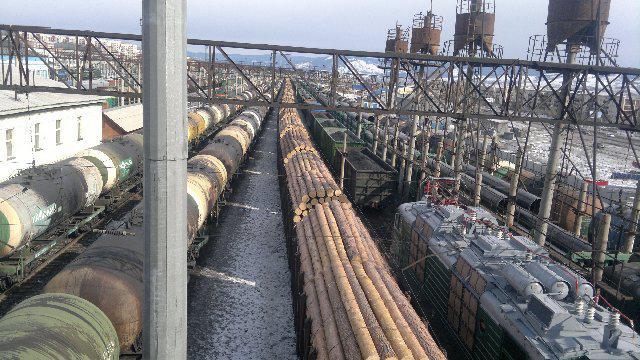 The products of the car and diesel locomotives are designed to provide the railway sector with the necessary transport. This sub-industry also produces track mechanisms necessary for rail welding, laying, snow removal and other works.
The products of the car and diesel locomotives are designed to provide the railway sector with the necessary transport. This sub-industry also produces track mechanisms necessary for rail welding, laying, snow removal and other works.
With regard to turbine construction, its main task is to equip the necessary equipment with the energy sector of the national economy. Plants of this sub-industry produce units for nuclear and hydraulic, gas turbine and thermal power plants. She is also responsible for equipping main gas pipelines and supplying injection, compressor and utilization units used in the oil refining and chemical industries, as well as non-ferrous and ferrous metallurgy.
Nuclear engineering plants specialize in the production of various equipment for nuclear power plants. This list also includes pressure vessel reactors.
The minimum volume of production is distinguished by the printing engineering industry. His factories produce conveyors for printing houses, printing presses, etc.
Machine tool
This branch of the machine-building complex produces:
Metalworking tool;
- forging and pressing equipment;
- metal-cutting machines;
- woodworking equipment.
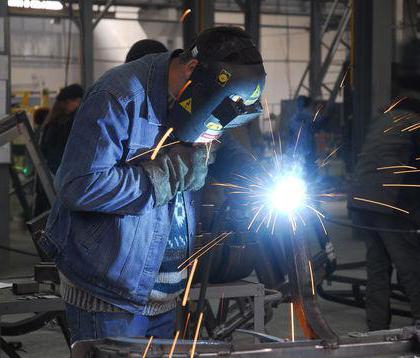 In addition to the production of finished products, this industry is also responsible for the centralized repair of units used for metalworking.
In addition to the production of finished products, this industry is also responsible for the centralized repair of units used for metalworking.
Transport engineering
One of its branches is the aviation industry. For the manufacture of products, materials and a variety of equipment are used, manufactured at enterprises of almost all branches of the machine-building complex. The factories of the aviation industry employ highly qualified engineers and workers who produce cargo and passenger aircraft... Helicopters of various modifications also roll off the conveyors of these enterprises.
The products of the rocket and space industry are orbital rockets and ships of the manned and cargo type. In these vehicles high technologies and wide inter-industry complexity of production are perfectly combined.
The enterprises of the shipbuilding industry use a large amount of metal in the production of their products. But, despite this, their placement is carried out outside the regions with large metallurgical bases. This is due to the great difficulties in transporting finished ships. Shipbuilding enterprises have numerous cooperative ties with factories in many sectors of the national economy. This allows you to produce on funds water transport installation of various equipment.
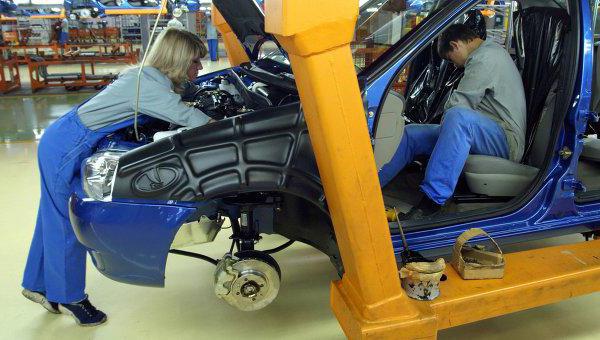 The largest branch of the machine-building complex is the automotive industry. Its products are used in all spheres of the national economy. Cars are also in demand in retail.
The largest branch of the machine-building complex is the automotive industry. Its products are used in all spheres of the national economy. Cars are also in demand in retail.
Tractor and agricultural engineering
This industry is distinguished by its detailed specialization. In the process of releasing its products, a small number of factories are involved, producing units and parts for various stages of the technological process.
Various types of combine harvesters are produced by the tractor and agricultural machinery. These include flax and grain, cotton and corn, potato and other machines. Various modifications of wheeled and tracked tractors are also produced in factories of this industry.
Instrument making and electrical industry
The products manufactured by the enterprises of these industries are characterized by low energy and material consumption. However, for its release, it is necessary to select highly qualified workers and research personnel.
Instrument-making factories carry out adjustment and installation of automation equipment. Their tasks include software development, design and production of medical devices, clocks, office equipment and measuring equipment. Such products are high technology and are used for automatic control of technological processes and information systems.
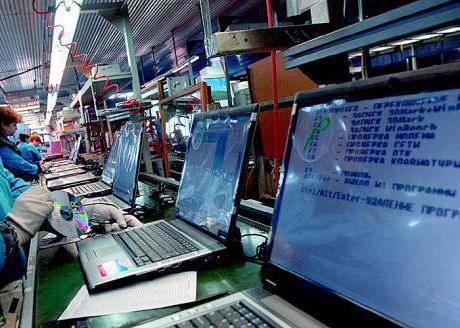 On Russian factories, which are part of the electrical engineering industry, currently produce more than one hundred thousand items of various products.
On Russian factories, which are part of the electrical engineering industry, currently produce more than one hundred thousand items of various products.
These products find their application in almost all areas of the national economy. The volume of products manufactured by the electrical industry exceeds the number of products that are manufactured by all branches of heavy engineering in aggregate. The main range of such products is represented by generators for hydraulic, gas and steam turbines, as well as electric motors, electric machines, converters and transformers, electrothermal, electric welding and lighting equipment.
Mechanical engineering for food and light industry
This area of production includes sub-sectors that produce equipment for knitwear and textile, footwear and sewing, fur and leather, food industry of the national economy. The geography of the location of such plants depends on the proximity to the consumer.
Role in the national economy
The importance of the machine-building complex cannot be overestimated. After all, this industry is one of the leading in the heavy industry of the Russian Federation. At the enterprises of this sphere, the main and most active mass of fixed assets is created, which include tools of labor. In addition, the machine-building complex has a significant impact on the direction and rate of development of scientific and technological progress, on the growth of labor productivity, as well as on many other indicators affecting the efficiency of production development.
The entire volume of products manufactured by the machine-building complex of Russia is more than one third of all marketable products manufactured in the country. Enterprises in this sector of the national economy employ 2/5 of the total number of industrial workers. Here, almost a quarter of all fixed assets of an industrial and production nature available in the country have been established.
The importance of the machine-building complex in the life of large regions of Russia is important. Moreover, the development of all spheres of the national economy depends on the level of development of these enterprises. The role of the machine-building complex is also great in ensuring the defense capability of Russia.
Distinctive features affecting the location of enterprises
The machine-building complex of Russia has wide inter-industry ties. But besides this, this education has a number of characteristic features. They must be borne in mind when placing various industries in a particular region.
First of all, the branches of the machine-building complex have developed specialization. In other words, their enterprises are focused on the production of one, or, in extreme cases, several types of products. At the same time, a high concentration is observed. This is such a factor in mechanical engineering, when several enterprises are simultaneously engaged in the production of finished products. Take a car factory, for example. Its products are only vehicles.
Such a plant receives the units and parts necessary for the manufacture of automobiles in finished form from other enterprises, the number of which can be quite large. This factor has a significant impact on the location of the machine-building complex, which vitally needs good transport links. That is why many branches of this sphere of the national economy are located in the Volga region, and indeed, these regions have a well-developed transport network.
The geography of the machine-building complex of Russia, focused on the production of the most complex and progressive goods (electronics and radio engineering), is associated with the science intensity factor. That is why such industries are located not far from Moscow, St. Petersburg, Novosibirsk, etc. That is, close to those places where the scientific base is well developed.
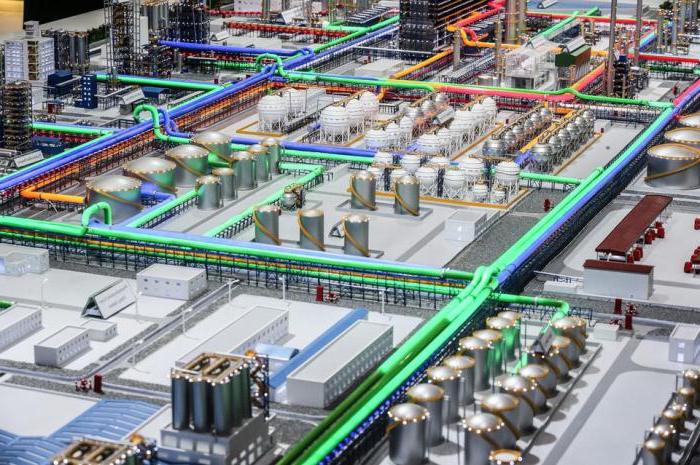 The machine-building complex, the products of which are associated with the military-strategic factor, are usually located in “closed” cities. These are Snezhinsk, Novouralsk, Sarov, etc. Sometimes such industries are located near military bases.
The machine-building complex, the products of which are associated with the military-strategic factor, are usually located in “closed” cities. These are Snezhinsk, Novouralsk, Sarov, etc. Sometimes such industries are located near military bases.
The factors of the machine-building complex influencing its development include the presence of a significant number of qualified personnel. Thus, the most labor-intensive industries are machine tool and instrument making. That is why such industries are located in regions with the highest concentration of the population, that is, in Moscow, Voronezh, Penza, Ryazan, etc.
During the construction of heavy engineering enterprises, their high material consumption is taken into account. For the production of products in these industries, a lot of metal is required. Only if it is available is it possible to produce metallurgical and power equipment. Similar enterprises are located in the regions of the Urals (Yekaterinburg), Siberia (Krasnoyarsk, Irkutsk). This is due to the large metallurgical base... Sometimes heavy engineering enterprises are guided by imported raw materials. There are those in St. Petersburg.
There are such types of machines, the need for which is experienced only by some regions. This applies, for example, to tractors for hauling timber and flax harvesters. This technique is not easy to transport, which means that it is best produced where there is a need for it.
Difficulties experienced
The development of the machine-building complex since the 90s of the last century has significantly slowed down. Some of these enterprises were simply closed, while others significantly reduced the volume of production. The number of products in factories producing machine tools, as well as products, has especially decreased. precision engineering... What was the main reason for this process? It was due to the low quality of our products, which could not compete with imported products. Also, after the breakup Soviet Union there was a break in all production ties that previously existed between the republics of the country.
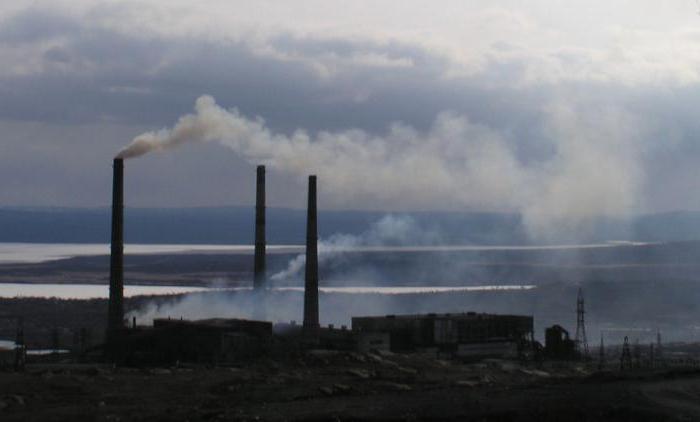 The problems of the machine-building complex also lie in the high wear and tear of equipment. According to statistics, it reaches almost 70%. This state of affairs exists in helicopter and shipbuilding, as well as in radio electronics. The average age of machine tools in engineering plants is approximately 20 years. This does not allow the use of new technologies in the production of products. Today, many branches of mechanical engineering require a radical modernization of equipment. Only in this case, their products will become competitive in the sales market.
The problems of the machine-building complex also lie in the high wear and tear of equipment. According to statistics, it reaches almost 70%. This state of affairs exists in helicopter and shipbuilding, as well as in radio electronics. The average age of machine tools in engineering plants is approximately 20 years. This does not allow the use of new technologies in the production of products. Today, many branches of mechanical engineering require a radical modernization of equipment. Only in this case, their products will become competitive in the sales market.
Many foreign companies are contributing to the aggravation of the situation. Penetrating into our market, such corporations significantly increase the level of competition.
Another acute problem in the machine-building industry is the shortage of personnel. The system of training labor resources that existed in the USSR was simply destroyed. Today the age of skilled workers is already approaching retirement age. Due to the acute shortage of young personnel, the process of modernization of machine-building production is significantly slowed down. But this deplorable situation is slightly improved thanks to investment projects. New factories are being built and have already been built, old enterprises are being reconstructed, new ones are being established and previously existing production ties are being restored.




